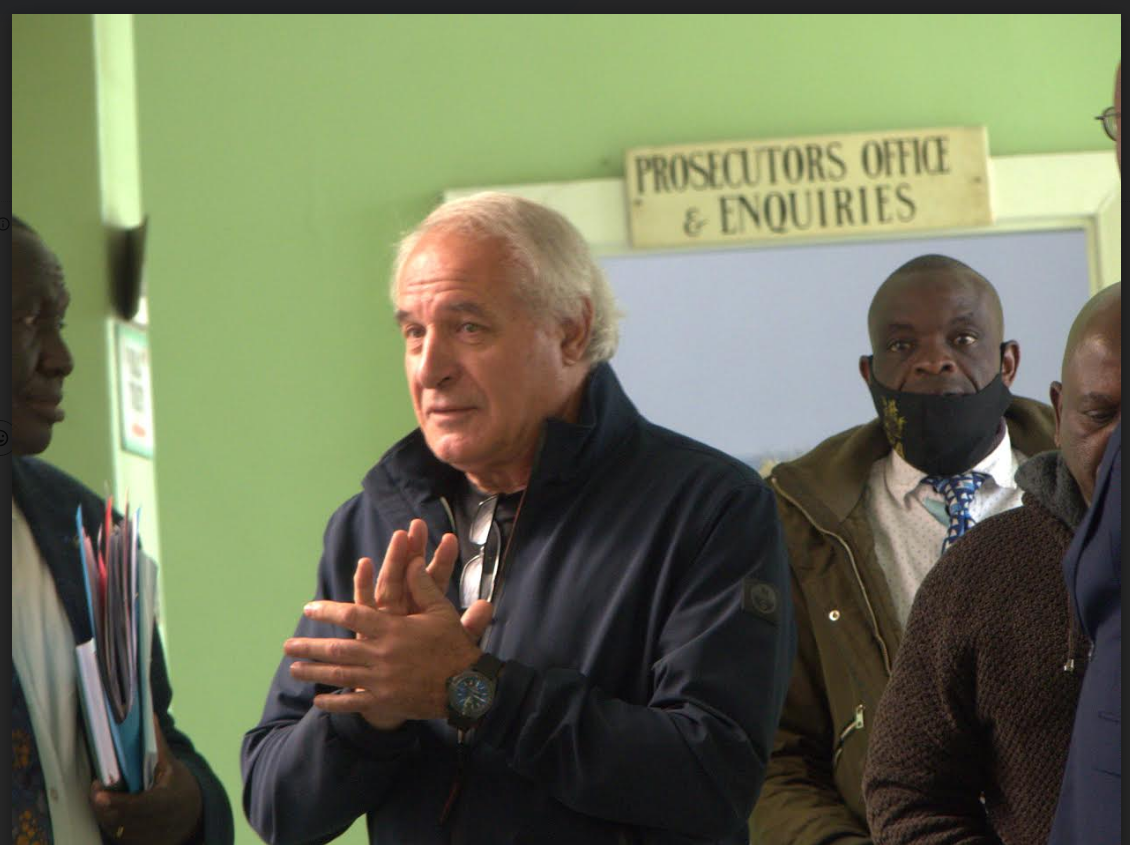
Like in many parts of the country, perennial water shortages in Harare are endemic.
Harare and other outlying areas such as Chitungwiza, Norton, Ruwa and Epworth largely depend on Lake Chivero for their water supplies.
The capital city’s piped water infrastructure, which was developed in the 1950s, initially catered for an estimated population of 300 000 people.
However, Harare’s increasing population and demand for the precious liquid has seen Lake Chivero catering for an estimated population of five million people.
The water hyacinth weed, which has also invaded Lake Chivero is threatening both the quality and volume of water, posing a big threat to Harare’s main water supply.
Factors such as public sector corruption, non-maintenance of the old water infrastructure, non-availability of water chemicals and the general economic crisis have also been identified as some of the leading causes of Harare’s water crisis.
Then, there is the human factor behind Harare’s water crisis.
Harare is located on its headwater wetlands, which are an important source of water after run-off.
- BCC proposes inquiry into water challenges
- Diarrhoea hits Gweru
- Monavale residents oppose building of cluster houses in vlei
- Poor planning, illegal settlements fuel Harare’s worsening water crisis
Keep Reading
These wetlands serve as water sources that discharge water into Harare’s main water supply.
Harare’s headwater wetlands are natural water reservoirs, which recharge the water table while filtering and purifying water.
They also prevent siltation and flooding.
In Zimbabwe, wetlands are protected under the Environmental Management Act (EMA).
However, these important sources of water are under threat from a number of factors that include construction, mining, farming and corrupt land allocations.
An auditor general’s report, which covered the period 2014 to July 2019, revealed that 3 716, 64 hectares of Harare’s wetlands had been affected by construction activities.
The report revealed that factors such as governance issues, inadequate enforcement of the law, pollution, cultivation, unplanned construction and mining were among the factors leading to the destruction of Zimbabwe’s wetlands.
Urban planner, Percy Toriro, said unplanned and illegal developments are leading to destruction of wetlands and ultimately worsening the city’s water crisis.
“Harare’s location is peculiar in that it is upstream and all the water supply dams are downstream,” Toriro said.
“This includes all the four urban satellite settlements that depend on Harare for water; that is Ruwa, Chitungwiza, Epworth and Norton.
“All these settlements in the Greater Harare region and their almost four-million-plus population are in the catchment of the river systems. “
Toriro added: “Development and expansion of the urban settlements has taken the form of urban sprawl, which is replacing vegetation with the concrete jungle destroying the ecosystem.”
He said urban planning requires the need to consider sustainable development and use of wetlands.
“Assessment of land cover changes over the past 20 years shows that almost 80% of wetlands have been lost to poor planning and illegal developments,” Toriro said.
“Best practice for urban planning is a consideration of sustainable development and use of wetlands to purify water naturally as well as help store water.”
Sand mining, which has turned out to be a source of income for unemployed residents of Harare, has contributed significantly to the destruction of wetlands in the capital.
Statistics show that by 2021, Harare had lost over 721 hectares of land to sand mining.
Analysts estimate that thousands of hectares of land, including wetlands, have been degraded due to sand mining.
According to Harare provincial development coordinator, Tafadzwa Muguti, an estimated 115 000 hectares of land (predominantly wetland areas) is occupied illegally across the country.
Interviewed sand poachers in Harare South said this was their only source of income in a country with high levels of unemployment.
“We are aware of the effects of our activities but at the same time we cannot leave our families to starve when there is an alternative source of income,” said a sand poacher, who spoke on condition of anonymity.
Urban farming on wetlands, stream banks and steep slopes continues to compromise the integrity of wetlands while disturbing the city’s water ecosystem.
This has led to soil erosion and ultimately, the siltation of Lake Chivero.
Fertiliser and pesticide run-off are some of the major threats to Lake Chivero emanating from urban farming.
This has also increased the cost of water purification amid indications that Harare requires an estimated US$2 million every month to buy water chemicals.
Statistics show that 20% of Lake Chivero’s storage capacity has been lost due to siltation.
Zimbabwe is a signatory to the Ramsar International Convention on the Protection of Wetlands and has seven internationally recognized sites including Lake Chivero.
Other internationally recognised wetlands under the Ramsar Convention include Monavale Vlei, Cleveland Dam, Victoria Falls, Chinhoyi Caves, Mana Pools and Driefontein Grasslands.
In Harare, Monavale Vlei and Cleveland dam have not been spared from unsustainable human practices.
Cleveland Action Alliance director, Jimmy Mahachi said: “Currently there is massive sand mining on the wetland, which is going on unabated.
“Agricultural activities are also rampant in the wetland area.”
Cleveland Dam is located in Harare’s high-density suburb of Mabvuku, which has some areas that have gone for nearly three decades without tape water.
Community Water Alliance director Hardlife Mudzingwa acknowledged that human activities were among the contributing factors to Harare’s water crisis.
“It is unfortunate that we have human activities contributing to the depletion of wetlands within the city and this is also contributing to the crisis of WASH delivery in Harare,” Mudzingwa said.
Mudzingwa said sand poaching and farming are the biggest threats to wetlands.
“Once a wetland is disturbed, we will not be able to get the natural ecosystem services that it provides, which include purification of raw water to improve quality and reduce the cost of purification,” Mudzingwa said.
“Recharge of streams is also affected and this also results in flash floods across the city.”
Sustainable development expert, Anna Brazier said there are activities, which if carefully controlled, can help in the protection of wetlands in Harare.
“Large wetland areas can be turned into recreational parks (for walkers, dog walkers, bird watching) as long as the activities are carefully controlled,” Brazier said.
“It is also possible to practice certain types of agriculture on wetlands as long as they are carefully regulated.
“No synthetic fertilisers or pesticides can be used, no ploughing and the types of crops planted has to be appropriate.
“If such rules are followed people can benefit from wetlands without disrupting their function.”
Failure to prioritise protection of wetlands, corruption related to land allocations and issuance of environmental impact assessment certificates (EIAs) on wetlands has also led to their destruction.
Harare Residents Trust director, Precious Shumba criticised local authorities for continuing to issue construction permits in wetland areas.
“Council committees responsible for the protection of wetlands and the environment are approving change or land use from open spaces, wetlands and recreational facilities to housing developments without even bothering to consult the ratepayers who elected them into office,” Shumba said.
“Citizen participation in the determination of safeguarding wetlands has become a peripheral issue, yet should be at the heart of all public policy.”
There is concern among environmentalists that Harare’s land use plans are failing to factor in the need for wetlands protection hence the continued depletion of the water sources.
Harare’s master plan was last updated in 1992.
According to the Zimbabwe National Water Authority, illegal activities on headwater wetlands have led to the city’s water table going down drastically.
EMA spokesperson, Amkela Sidange said they are working with communities on wetlands preservation across the country.
“Section 113 of the EMA as read with Statutory 7 of 2007 clarifies the issue of wetlands utilization and when you see an activity happening on a wetland without the authority from the agency, that activity is illegal,” Sidange said.
“Wetlands act as water valves that recharge underground and surface water and if you look at Harare’s wetlands, they are headwater wetlands and act as sources of water.”










